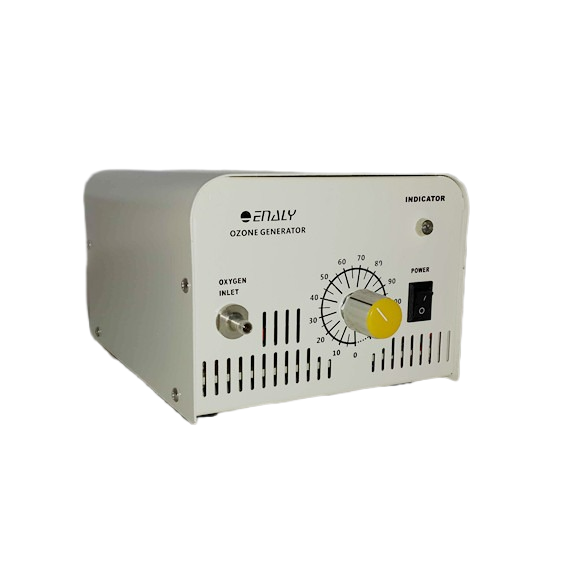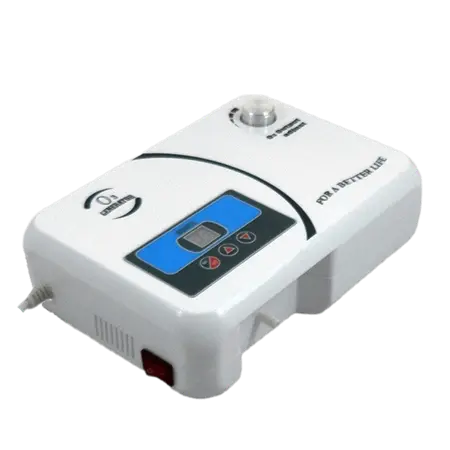Ozone generators. The control of microorganisms, particularly pathogenic microorganisms, is crucial in all stages of food handling. Traditional chemical methods such as chlorine and bromine compounds are effective but can lead to the formation of halogenated byproducts that can contaminate the food product. Ozone generators, on the other hand, offer a powerful and safe alternative for disinfection. Ozone is a strong oxidizing agent and disinfectant that does not produce any halogenated byproducts. Its unique combination with other materials such as hydrogen peroxide or ultraviolet radiation creates the highly reactive intermediate hydroxyl free radical, which is even stronger than ozone itself.
Chemical control methods, such as chlorine and bromine compounds, are effective for controlling microorganisms but can leave behind halogenated byproducts that can contaminate food products. Ozone generators provide a powerful and safe alternative for disinfection, as ozone is a strong disinfectant that does not leave any halogenated byproducts. Ozone can also be applied in both gas and liquid forms, providing additional processing benefits. Moreover, when combined with other materials like hydrogen peroxide or ultraviolet radiation, ozone creates a highly reactive intermediate called hydroxyl free radical, which is an even stronger oxidizing agent than ozone.
Ozone is a powerful oxidizing agent and disinfectant, which means it can achieve both oxidation and disinfection in a single step. However, it is important to note that not all substances can be completely destroyed by ozone, even though it is the strongest oxidizing and disinfecting agent available in the market. In most cases, oxidation reactions occur in stages and only arrive at CO2 and water when the substance is exposed to a sufficient concentration of ozone for a sufficient amount of time, allowing for complete oxidation (mineralization) to take place.
It is crucial to be mindful of the use of ozone when treating organic foods, as excessive use can lead to partial oxidation of surface organic materials and alter the quality of the food. The key to effectively using ozone in food processing is to use the right amount of ozone to achieve the desired outcome without causing damage to the food. This requires testing and determining specific ozonation conditions for different food products.
Water is a crucial element in agriculture and food processing, and it can be used to transport ozone. Since water comes in contact with food, it is essential to ensure that it is as clean as possible. Ozone has a long history of effectively treating water and wastewater, making it a viable solution for water purification in agriculture and food processing facilities. The use of ozone-treated water in food processing plants is becoming increasingly popular for washing and spraying food products, as well as cleaning processing and storage equipment. With the rising cost of treating potable water, the use of ozone-treated water for reuse in food and agriculture applications is becoming increasingly cost-effective.
Many agricultural products are stored after harvest before being packaged and sold. Gas phase ozone, when applied correctly with attention to concentration, relative humidity, and exposure times, can effectively keep microorganism and insect levels low during storage. This can increase the storage life of the product while maintaining high quality, resulting in less product loss.
Ozone generators have many potential applications in food processing industry.
- Ozone can be used to sanitize and disinfect water used in irrigation and hydroponics systems, to prevent the growth of harmful microorganisms and bacteria.
- Ozone can be used to treat wash water for fruits and vegetables to kill bacteria and extend the shelf life of produce.
- Ozone can be used as an alternative to chemical fumigants in stored grain facilities to control pests and prevent mold growth.
- Ozone can be used to sanitize and disinfect food processing equipment, such as conveyor belts, cutting boards and packaging machines.
- Ozone can be used to sanitize and disinfect food storage facilities and containers, such as refrigeration units and shipping crates.
- Ozone can be used to purify air in agricultural and food processing environments, to eliminate odors and control the growth of mold and bacteria.
- Ozone can be used to improve water quality in aquaculture and fish farming operations, by reducing the levels of bacteria and parasites in the water.
- Ozone can be used to treat wastewater generated in food processing facilities, to remove contaminants and reduce the risk of pollution.
- Ozone can be used to sanitize and disinfect animal housing and breeding facilities, to control the spread of disease and improve animal health.
- Ozone can be used to extend the shelf life of fresh cut and value added products, such as pre-cut fruits, vegetables and salads.
Popular products by ENALY Commercial Ozone Generator 1KNT-12
Commercial Ozone Machine 5000BF
BUY ENALY OZONE GENERATORS ONLINE


